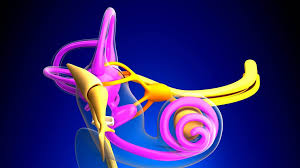Description:
The goals of this assessment are to:
Demonstrate your knowledge of the Anatomy and Physiology of the Integumentary, Digestive and Skeletal body systems;
Describe the complex interactions between these body systems to maintain health, wellbeing and homeostasis for the individual in your chosen scenario.
HLT100 Anatomy & Physiology of The Integumentary Case Study-Sunshine Coast University Australia.

Instructions:
a.In this task, you will provide a written response to a case study.
b.Choose EITHER Case Study A OR Case Study B for your assessment. Please complete one Case Study ONLY – DO NOT complete both case studies.
c.You may choose to complete either case study, regardless of your enrolment.
d.This task is to be undertaken individually and submitted via Blackboard Safe Assign on or before the above due date.
e.Submissions should be in Word or PDF format. You do not need a formal cover sheet, but please include the following information on your submission:
o Name,
o Student ID
o Tutorial class
Preparing your answers
Audience, tone and pitch of your assignment
Write your answers using the types of language and terminology that are used within HLT100, as though you were interpreting and discussing the case with a health professional. The audience is theteaching and marking staff within HLT100.
Case Study format
- 1500 words (+/- 10%). Word count includes in-text citations and excludes reference list.
- Answer each question as Q1 … (answer XYZ); on a new line start Q2 … (answer XYZ), and so on. Do not copy the actual questions into your document. Include your reference list at the end on the final page/s of this document (do not attempt to submit references as a separate document, as Safe Assign will only accept one document).
- Format using 1.5 line spacing and 12-point font.
- Images may be used, but please ensure that they are
- Referenced
- Referred to in the text – e.g. “Figure 1 illustrates…”
- Fully-explained in the narrative to assist understanding.
Case Study A: Katherine
Katherine is a 72-year-old female residing alone in rural Queensland. She’s now retired, having previously worked as an office administrator for almost 50 years, and is usually able to complete tasks at home herself. Katherine’s son Tony, however, is worried about her and feels she may be better off with some supported living.
HLT100 Anatomy & Physiology of The Integumentary Case Study-Sunshine Coast University Australia.

1.During the winter, Katherine gets cold very easily, and spends most evenings under a pile of blankets! Including reference to the effects of aging, interpret Katherine’s poor the rmoregulation withregards to:
i. the structural integrity of the skin/effects of ageing on this, and
ii. the mechanisms her body can take to warm her up/attempt to maintain homeostasis.
Unfortunately, when trying to get a cup of tea whilst still wrapped in her blanket, Katherine had a fall which resulted in fractures to her left Humerus and Neck of Femur. As a result, she’s currently in
hospital, and under your care.
2.When you talk to him, her son Tony expresses shock that a simple fall has led to such serious consequences for his mother! Using patient-friendly terminology that Tony and Katherine can understand,
i. explain the fracture/healing process to them both;
ii. Discuss three (3) factors which may have contributed to Katherine easily fracturing a bone when falling.
3.When doing some checks, you notice that one of the medications Katherine is currently prescribed lists “inhibited bile production/release” as a possible adverse effect.
i. Using your knowledge of the structure and function of the digestive system, clearly explain the two (2) main functions of bile;
ii. Detail the potential risks to Katherine’s health, should this adverse-effect occur, and identify two (2) possible signs/symptoms you could look out for.
4.It has been suggested that Katherine take a Vitamin D supplement and increase her daily dietary calcium intake. Critique this suggestion with explicit consideration of Katherine’s case, applying your knowledge of the above systems.
Case Study B: Claire
Claire is pregnant again, and it’s a girl! She and her husband Ben are excited to be expecting a little sister for their 2-year old twins James and Danielle. Claire has just entered the second trimester of her pregnancy, and has tried to keep as active as possible.
1.Claire is keen to learn from her experience as a mother and remembers that when her twins were babies, they became cold very easily which often disturbed their sleep (and hers!). Interpret this poorer the rmoregulation as seen in a normal healthy baby, with regards to
i. the structure of a baby’s skin, particularly considering heat-loss by a new-born baby, and
ii. the mechanisms in which a baby’s body can respond to warm itself up/restrict heat-loss.
2.Unfortunately, Claire was diagnosed with Intrahepatic Cholestasis of Pregnancy during her previous pregnancy with James and Danielle, impacting her body’s ability to produce and release bile.
i. Using your knowledge of the structure and function of the digestive system, clearly explain the two (2) main functions of bile;
ii. Detail the potential risks to the health of Claire and her unborn baby, should she develop this during her current pregnancy, and identify two (2) possible signs/symptoms you could look out for.
HLT100 Anatomy & Physiology of The Integumentary Case Study-Sunshine Coast University Australia.

3.To make Claire’s previous pregnancy even harder, she fell and fractured her radius! Applying your knowledge of skeletal system structure, and employing patient-friendly terminology:
i. explain the fracture/healing process to Claire and Ben;
ii. Discuss two (2) factors which may have contributed to Claire easily fracturing a bone when falling.
4.It has been suggested that Claire consider supplementing her diet with Vitamin D and Calcium, whilst also monitoring her fat intake. Critique this suggestion with explicit consideration of Claire’s case, applying your knowledge of the above systems.



